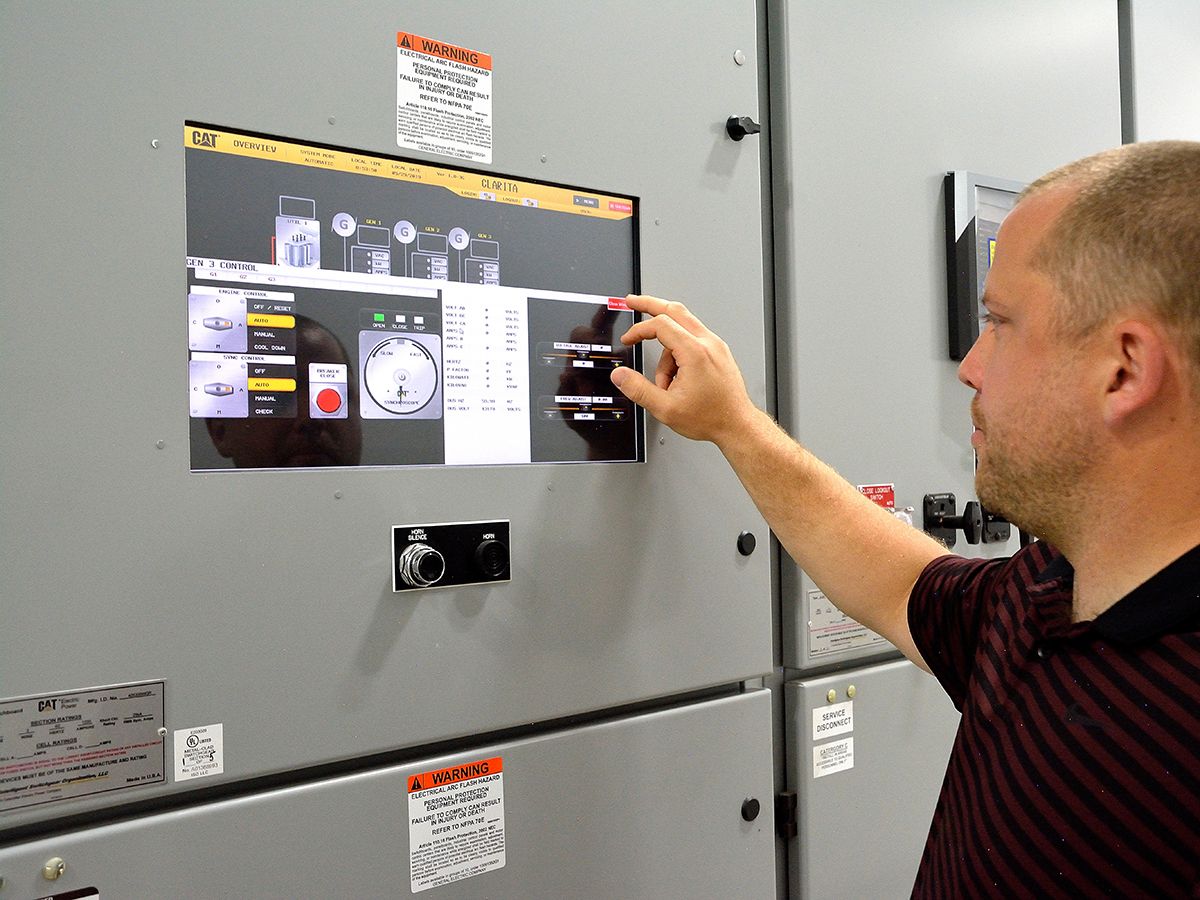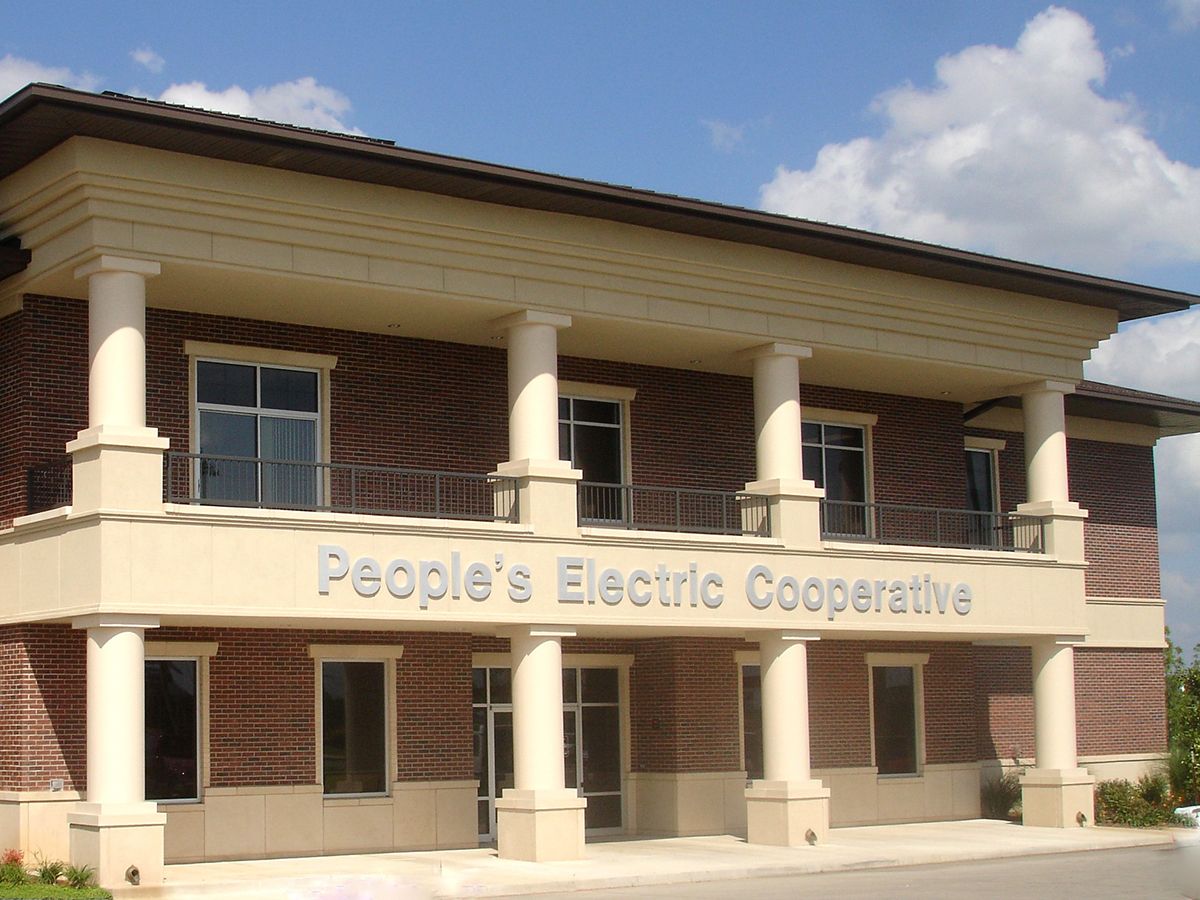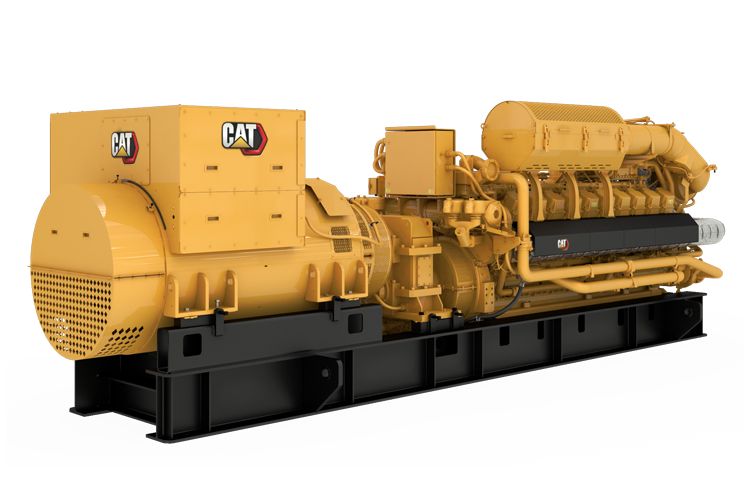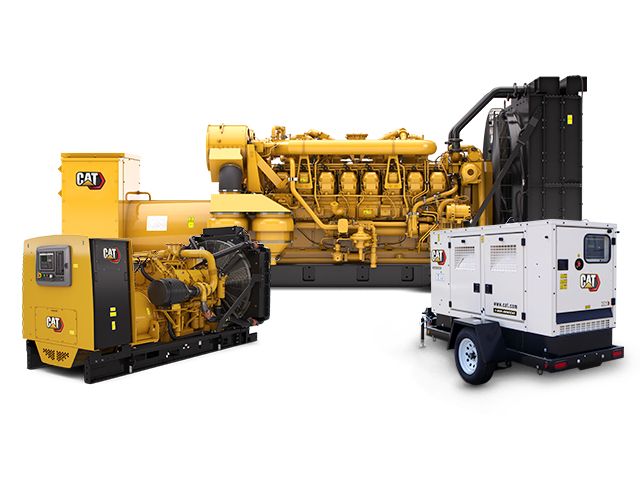

Sign In
Welcome! Sign In to personalize your Cat.com experience
If you already have an existing account with another Cat App, you can use the same account to sign in here
Register Now
One Account. All of Cat.
Your Caterpillar account is the single account you use to log in to select services and applications we offer. Shop for parts and machines online, manage your fleet, go mobile, and more.
Account Information
Site Settings
Security
Cat® Generators Provide Efficient Power Solutions to Rural Oklahoma
Customer: People’s Electric Cooperative
Location: Ada, Oklahoma
Customer Business Issue: Peak shaving, demand management
Solution: Cat® G3520H gas generator sets (30), 13.2 kV utility/generator paralleling switchgear
Cat® Dealer: Warren Cat









POWER NEED
As late as the mid-1930s, nine out of 10 rural homes were without electric service. Farmers milked cows by hand in the dim light of a kerosene lantern, while their wives slaved over a wood range and a washboard.
The unavailability of electricity in rural areas kept their economies entirely dependent on agriculture. Meanwhile, factories and businesses preferred to locate in cities where electric power was easily acquired. For many years, power companies ignored the rural areas of the nation.
The first official action of the federal government pointing the way to the present rural electrification program came with the passage of the Tennessee Valley Authority (TVA) Act in 1933. This act authorized the TVA Board to construct transmission lines to serve “farms and small villages that are not otherwise supplied with electricity at reasonable rates.”
It was during this time that People’s Electric Cooperative (PEC) was established in 1937 to provide power to the homes and farms and businesses in south central Oklahoma.
With headquarters in Ada—about 80 miles southeast of Oklahoma City—PEC today provides power to more than 15,000 members at 21,000 locations in 11 counties.
People’s is a member of the Southwest Power Pool (SPP), which provides reliable power, adequate transmission infrastructure, and competitive wholesale electricity prices for its members. People’s is subject to electrical rates charged by SPP, which can fluctuate greatly depending on the available supply and demand of electric power on the system.
As a rural distribution electric cooperative, PEC has several power purchase agreements (PPAs) with other energy providers. The power comes from traditional generation sources, but also includes natural gas and renewables such as wind and solar power. Several years ago, some of the utility’s PPA contracts were coming to an end.
“We needed to replace 75 megawatts, so we contracted with an independent engineering firm to see what our best option was,” says Kevin Wood, executive vice president and CEO for People’s Electric. “The study showed that it was best for us to add natural gas generation as part of our own system.”
SOLUTION
“We are always striving to keep our rates low, and this was something that we set out to do many years ago when we joined the SPP and started to buy power from the market,” says Russ Brown, a senior generation engineer for PEC. “It gives us a lot of flexibility in the fact that we can control what we do with our own generation. We get accredited for any time we run as well as for the generating capacity that we have sitting here.”
In July 2017, People’s Electric began generating its own power at the two main generator sites. The entire project was completed and fully commissioned in January 2018.
The gensets are split up at five contiguous locations: Centrahoma West and Centrahoma East, which each have 10 generators. Nearby, Little Dixie contains five generators, Stewart has two, and Buzzard Flop has three.
With the high efficiency and the size that matched PEC’s requirements, the Cat G3520H generator set was an easy choice compared to any other reciprocating unit that they looked at, Brown says.
“The G3520H has a lot of advantages; not only is it a very fast-loading unit, but it’s also pretty hardy. We see some very high temperatures through the summer when we’re running—we may have ambient temperatures well into the 100’s—and we don’t have to de-rate due to temperature. So that’s a big plus.”
RESULTS
Now that it has the ability to generate power on its own, People’s is able provide more affordable power to its ratepayers.
“It allows us to provide the lowest rates we can to our members because we have the flexibility of using these units or not,” Brown says. “We get a low market price because we know that the generators are efficient, and they run at a price that we find acceptable.”
PEC monitors the price of power from the grid and decides when to run the generators.
“As a participant in the Southwest Power Pool, we’re watching those grid prices all the time,” Wood says. “We’re always looking for the best low-cost power and also trying to provide the best service. So, every day, even down to the hour and in real time, we’re watching that market and just trying to see what the best mix of our portfolio is and then we’re making adjustments, accordingly. Anytime that we can generate power cheaper than we can buy it out of market, that’s when we’re going to run the generators.
“These reciprocating units fit really well with renewables such as wind,” Wood adds. “The SPP market likes to use those to supplement wind power, and they can ramp up quickly, so I think that’s one of the main advantages of these gensets.”
PEC has two sites with a total of 20 generators that are registered in the market with the Southwestern Power Pool. The SPP analyzes the expected load on the system for the day ahead and decides what generators PEC will run.
“SPP will actually send us an e-mail signifying exactly when our run times will be for the next day and we just follow their lead,” Brown says. “They tell us exactly what times we will run, and when we’ll shut down. And then there’s also times of market congestion when they’ll do what they call an RUC, which is a real time unit commitment, and essentially that’s when we have to have that quick ramp capability.”
When it receives a call to run from the Southwest Power Pool, PEC’s Cat generator sets can be fully loaded and online within 10 minutes of receiving the call.
“So, from getting the phone call to fully loaded we’re there in 10 minutes,” Brown says.
Since the entire fleet began operating last year, the gensets are running considerably more than was originally forecast, Wood says.
“The engineering study estimated the generator would run about 2,000 hours a year, and we’re on pace to run those a lot more than what the study projected,” Wood says.
“We’ve noticed since we went into the market late last year with our two main sites that even on days where wind power is really prevalent and the cost of grid power is generally low, the efficiency of these Cat units deems that we are expected to run more often than not,” Brown adds.













